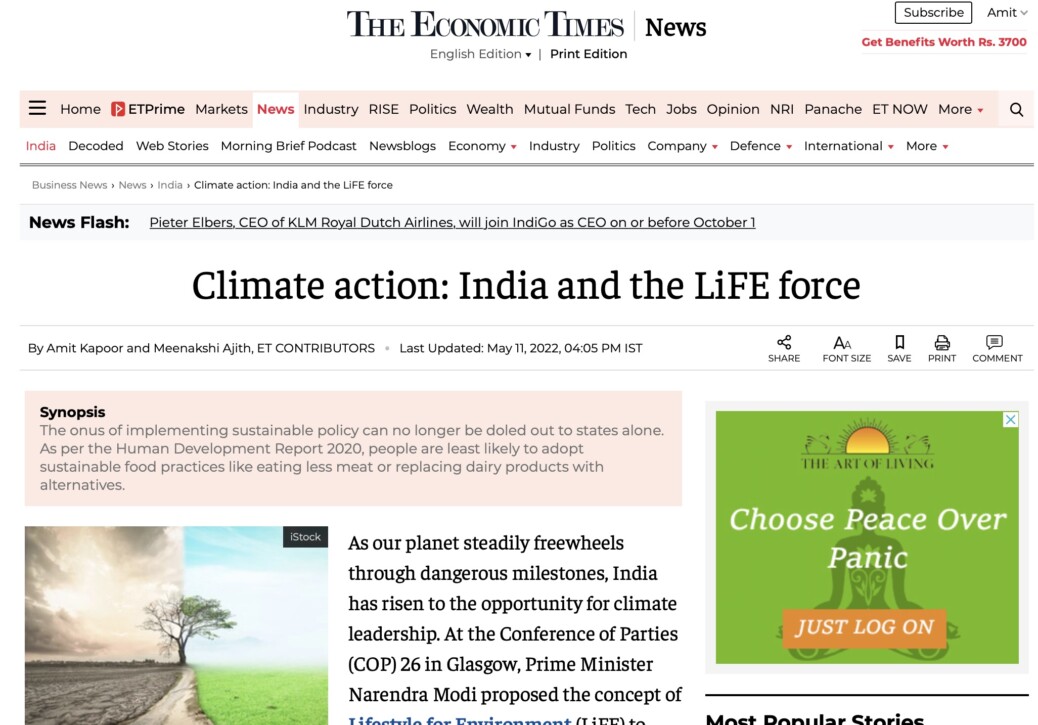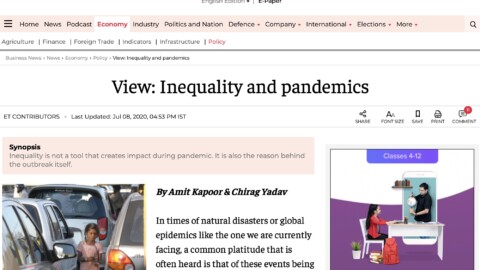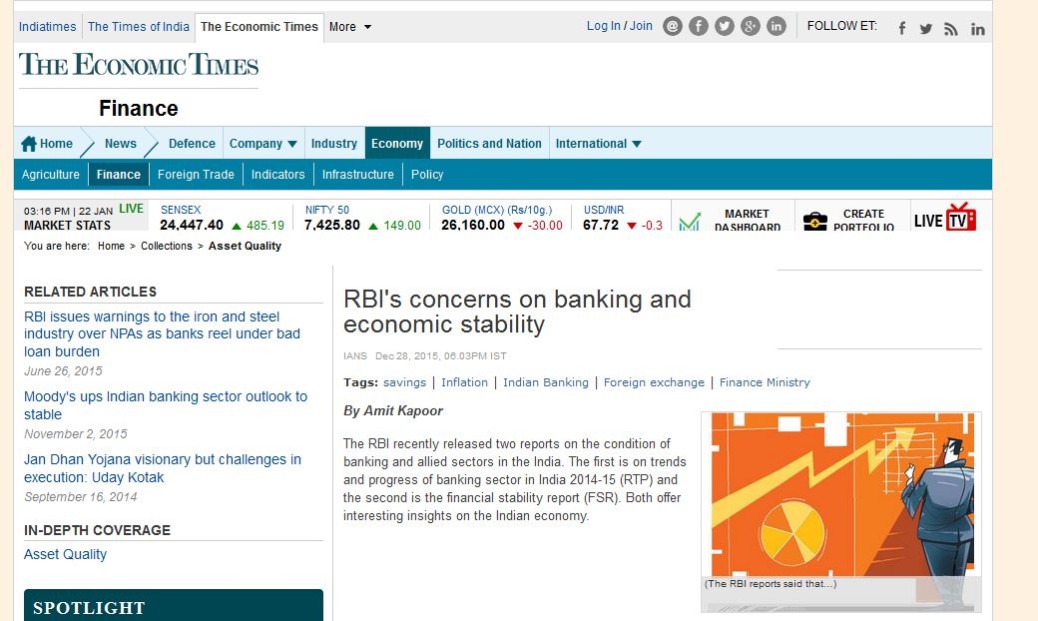The onus of implementing sustainable policy can no longer be doled out to states alone. As per the Human Development Report 2020, people are least likely to adopt sustainable food practices like eating less meat or replacing dairy products with alternatives.
As our planet steadily freewheels through dangerous milestones, India has risen to the opportunity for climate leadership. At the Conference of Parties (COP) 26 in Glasgow, Prime Minister Narendra Modi proposed the concept of Lifestyle for Environment (LiFE) – a one-word movement for one world. The idea gained traction in international climate forums, but what exactly does LiFE mean for a country like India? How can we lead the campaign for climate adaptation, and what are the high impact pillars we should focus on to tailor India’s Lifestyle for the Environment?
India has reached a tipping point wherein the onus of implementing climate policy cannot be conveniently passed on to the states alone. As per the Human Development Report 2020, people are least likely to adopt sustainable food practices like eating less meat or replacing dairy products with alternatives. Most recent data released by the Food and Agriculture Organisation (FAO) shows that 31% of GHG emissions originate from the agri-food industry. In India, there is also a dual challenge of eliminating nutritional poverty while promoting mindful consumption to reduce the carbon footprint and wastage in the food sector. Additionally, the role of lifestyle changes in food, fashion and transport and their impact on climate change is not given due attention. The ownership of a private vehicle in India is a testament to class status. Though the penetration of electric cars in India is commendable and should be encouraged, in the long term, they still do not tackle the issue of traffic congestion in big cities. More thrust towards modernizing public transport and easing mobility in urban areas is crucial to sort out India’s transport sector. Ultimately upcoming and well-developed cities should consider redesigning spaces to eliminate the need for a work-home commute. There are health and economic benefits if we could all walk to work while breathing non-polluted air.
Climate conscious infrastructure and schemes in India are rapidly growing. Globally, the cost of sustainable technology, like solar panels and batteries, has fallen by 85% in the last decade. Our responsibility is to complement state efforts with ecologically sustainable behavioural change at the household level. Renewable energy has gained celebrity status in sustainable development, and India is already geared up for a transition to clean energy. India’s renewable energy capacity has grown by 286% in the last seven years alone and currently stands at roughly 152 Giga Watts. Now it is time to shift the focus toward the even distribution of its benefits. While states like Gujarat, Karnataka and Goa are leaders in the transition, Chhattisgarh, Bihar, and Jharkhand lag behind this effort. Polarized outcomes cannot drive the movement for LiFE, and all states should have their energy policy to enhance renewable energy capacity efficiently.
Water management is one of the sectors that require urgent attention. Only 12 states in the country have above 50% access to water. Groundwater is overexploited, and currently, 54,637 habitations have quality affected groundwater. This water is extensively used for irrigation and household purposes and is contaminated with fluoride, heavy metals, arsenic and nitrates. Strengthening water treatment infrastructure is, therefore, as important as providing access. Agriculture consumes 70% of India’s water resources. Expanding water-saving initiatives like micro-irrigation capacity in states should be an urgent effort. The point to note is that installing functional connections alone cannot solve India’s impending water crisis; only simultaneous interventions for agriculture, water treatment, and access can indemnify India’s water security.
A few weeks ago, India was battered by heatwaves and a nationwide power crisis affecting life, livelihood and mobility. Climate concerns are no longer regionally exclusive, but our solutions should be context-dependent and socially inclusive. Every Indian state has a uniquely special product, be it Sikkim’s burgeoning organic farms, Meghalaya’s inspiring water management or Kerala’s impeccable waste management. There is a bounty of climate innovations and indigenous knowledge at the grassroots, and our states can leverage this regional wealth for successful climate leadership. India cannot comfortably slack behind its historically low per capita emission figures because we are highly vulnerable to the vagaries of climate change. It is also in the interest of the country’s economy and society to unify its development decisions with climate decisions. If not, the ramifications of climate change will undercut any development efforts for the future. Some say that we are blighted by the values of our times and have gone too far. The question to ask now is how willing are we to assume responsible stewardship of this planet?
The article was published with Economic Times on May 11, 2022.
























